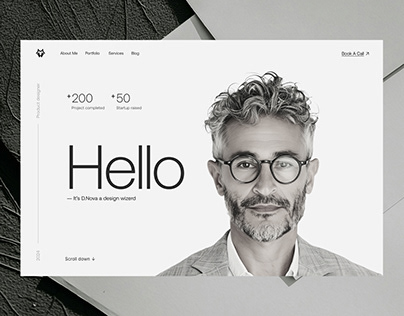Modern Website Design Services to Improve Your Online Identity
Leading Tips for Developing an Impactful Web Site Layout That Transforms
In today's digital landscape, the importance of an impactful internet site layout can not be overemphasized, particularly when it involves transforming site visitors into customers. To achieve this, one should take into consideration a variety of aspects, consisting of recognizing the target market, prioritizing user experience, and optimizing for mobile platforms. Additionally, the calculated use engaging call-to-actions and a distinct aesthetic pecking order plays a critical duty in guiding users through their trip. As we check out these vital aspects, it becomes apparent that the success of your internet site rests on greater than just aesthetic appeal; it calls for a thoughtful strategy to style and capability.

Understand Your Target Market
Understanding your target market is fundamental to reliable web site design, as it prepares for producing an engaging customer experience. Determining who your individuals are, including their demographics, choices, and habits, enables designers to tailor the website's web content, layout, and performance to fulfill particular demands.
Carrying out extensive marketing research is important in this procedure. Surveys, interviews, and analytics can give useful insights right into customer expectations and discomfort points. By assembling this data, developers can produce customer personalities that stand for various sectors of the audience, making sure that layout decisions are informed and pertinent.
Furthermore, comprehending the target audience helps in choosing ideal design aspects such as color pattern, typography, and images that resonate with users. An internet site that speaks directly to its target market fosters a sense of link and count on, motivating longer brows through and greater conversion prices.
Inevitably, a user-centered approach to site design not just enhances user fulfillment yet likewise sustains service purposes by driving involvement and loyalty. By prioritizing the requirements and choices of the target market, an internet site can efficiently serve its function and accomplish preferred outcomes.
Prioritize User Experience
To improve the general effectiveness of a web site, prioritizing customer experience (UX) is vital (Website Design). A well-designed UX makes certain that site visitors can browse the website effortlessly, find info swiftly, and involve with material meaningfully. This causes boosted individual fulfillment and greater conversion rates
Begin by implementing intuitive navigating. Menus ought to be logically structured, enabling users to locate vital areas of the site with marginal initiative. Uniformity in design aspects, such as color pattern and typefaces, fosters knowledge, which is critical for keeping individual involvement.
Furthermore, consider the filling rate of your site. A hold-up of just a couple of seconds can cause considerable drop-offs, as users are less likely to await a slow-loading web page. Enhancing pictures and optimizing code can boost efficiency and maintain visitors.
By prioritizing individual experience, you not only create an extra enjoyable click to investigate environment for visitors however additionally strengthen your brand's trustworthiness. Eventually, an emphasis on UX is an investment in the long-lasting success of your internet site.
Maximize for Mobile Tools
Optimizing for mobile gadgets is vital in today's electronic landscape, where a boosting number of users gain access to web sites with smartphones and tablets. A mobile-friendly style not only enhances individual experience but also plays a significant duty in boosting internet search engine positions. To accomplish this, it is necessary to embrace a responsive design that automatically gets used to numerous display dimensions and alignments.

Loading speed is an additional important aspect; mobile users are typically much less person and expect fast accessibility to details. Optimize photos and take advantage of browser caching to boost efficiency. Examination your site on multiple gadgets and screen resolutions to identify and fix any type of possible functionality issues. By prioritizing mobile optimization, you make sure that your website stays affordable and properly engages a more comprehensive audience.
Usage Compelling Call-to-Actions
A website's efficiency usually rests on its capacity to guide visitors toward wanted actions, making engaging call-to-actions (CTAs) essential elements of style. CTAs work as the pivotal factors that guide individuals to involve with the website, whether that means making a purchase, registering for an e-newsletter, or downloading and install a source.
To create effective CTAs, quality is extremely important. Use succinct language that plainly communicates the action you want the individual to take. Phrases such as "Get going," "Sign Up Free," or "Shop Now" not just communicate necessity yet additionally eliminate uncertainty. The placement of CTAs is similarly essential; they must be purposefully positioned throughout the website to ensure they are quickly visible, specifically in high-traffic areas.
Furthermore, consider using directional signs, such as arrows or images, to assist individuals towards these buttons. By focusing on these aspects, companies can substantially improve customer interaction, driving conversions and ultimately attaining their website's objectives.
Concentrate On Visual Power Structure
Effective internet site style depends greatly on a well-structured visual power structure that guides customers via web content perfectly. By arranging elements in a manner that focuses on info, developers can improve customer experience and facilitate decision-making. This involves making use of size, shade, contrast, and spacing tactically to draw attention to one of internet the most crucial elements of a webpage.
Making use of larger font styles for headings and subheadings develops a clear distinction between various sections, enabling customers to check material easily. Furthermore, using contrasting colors for buttons and calls-to-action can capture customer attention and motivate communication. Whitespace is an additional vital component; it avoids mess and makes it possible for users to concentrate on key messages without diversions.
Photos and graphics need to complement the text while also adhering to the recognized pecking order, enhancing the overall message (Website Design). Uniformity in layout components, such as color design and typography, more strengthens the visual pecking order, making navigation user-friendly

Final Thought
In final thought, efficient website layout requires a comprehensive understanding of the target audience, prioritization of customer experience, and mobile optimization. Inevitably, a well-executed website style serves as an essential component in driving customer actions and achieving organization goals.